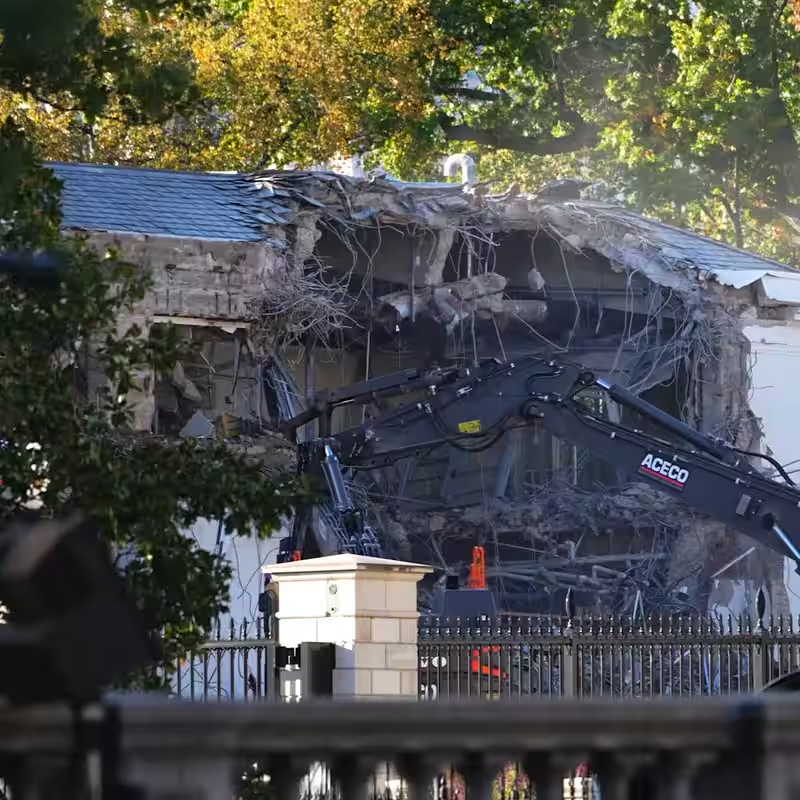The historic grounds of the White House are echoing with the clang of sledgehammers and the rumble of heavy machinery—not from an attack, but from a controversial presidential decision. In a move that has stunned historians, architects, and political observers alike, former President Donald Trump has initiated the full-scale demolition of the White House East Wing as part of a private renovation project tied to his post-presidency activities .
What’s Happening at 1600 Pennsylvania Avenue?
On October 21, 2025, demolition crews began dismantling the facade of the East Wing—a structure that has stood since 1942 and housed critical operations including the Office of the First Lady, the White House Social Secretary, and the iconic movie theater . The project, reportedly backed by Trump-aligned entities, aims to replace the wing with a new, opulent ballroom designed for private events and high-profile gatherings .
East Wing Demolition: A Timeline of Controversy
The East Wing demolition has raised serious questions about oversight, historical preservation, and the blurred lines between public heritage and private ambition. According to Vox, the project appears to be moving forward without formal review, environmental assessment, or approval from the U.S. Commission of Fine Arts or the National Park Service—bodies typically involved in any structural changes to the White House complex .
Why the East Wing Matters
Built during Franklin D. Roosevelt’s administration, the East Wing was originally conceived to balance the West Wing architecturally and provide additional office space. Over the decades, it became a symbol of inclusive governance:
- Hosted Eleanor Roosevelt’s groundbreaking press conferences for female journalists
- Served as the launchpad for Michelle Obama’s “Let’s Move!” campaign
- Housed the White House Visitors Office and public tour operations
Its destruction, critics argue, erases not just bricks and mortar—but decades of democratic symbolism .
Public and Political Backlash
Reactions have been swift and scathing. Preservation groups like the National Trust for Historic Preservation called the demolition “an act of cultural vandalism.” Meanwhile, Democratic lawmakers have demanded congressional hearings, citing potential violations of the National Historic Preservation Act.
“This isn’t just real estate—it’s American heritage,” said Rep. Eleanor Holmes Norton (D-D.C.). “No individual, not even a former president, should be allowed to erase history on a whim.”
What’s Next?
While the Trump team claims the new ballroom will “modernize” the White House campus and generate revenue through private rentals, legal experts warn the project may face injunctions. The General Services Administration (GSA), which oversees federal buildings, has remained conspicuously silent—a silence critics interpret as complicity .
Infographic: East Wing vs. Proposed Ballroom
| Feature | Original East Wing | Proposed Trump Ballroom |
|---|---|---|
| Purpose | Public engagement, First Lady initiatives | Private events, luxury rentals |
| Accessibility | Open to public tours | Invitation-only |
| Historical Status | Contributing structure to National Historic Landmark | No historic designation |
Conclusion: A Nation Watches
As jackhammers tear through limestone and marble, the East Wing demolition has become more than a construction project—it’s a flashpoint in America’s ongoing debate over power, legacy, and who gets to shape national memory. With lawsuits looming and public outrage mounting, one thing is clear: the wrecking ball may be swinging, but the fight is just beginning.




